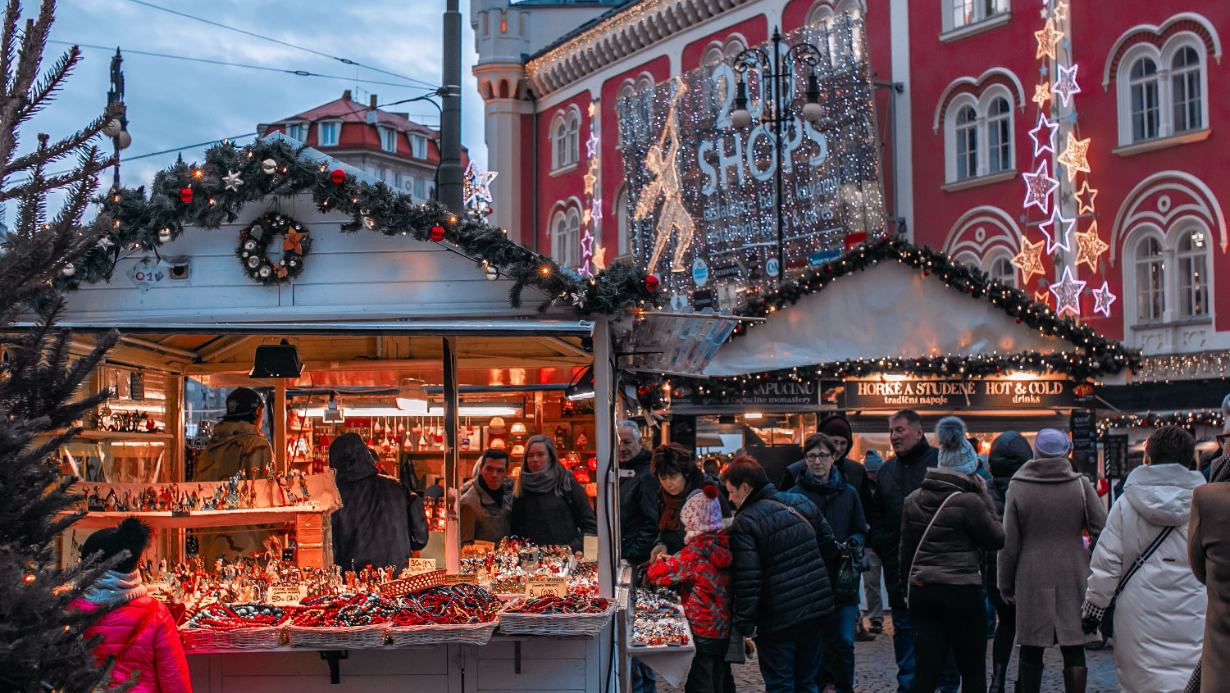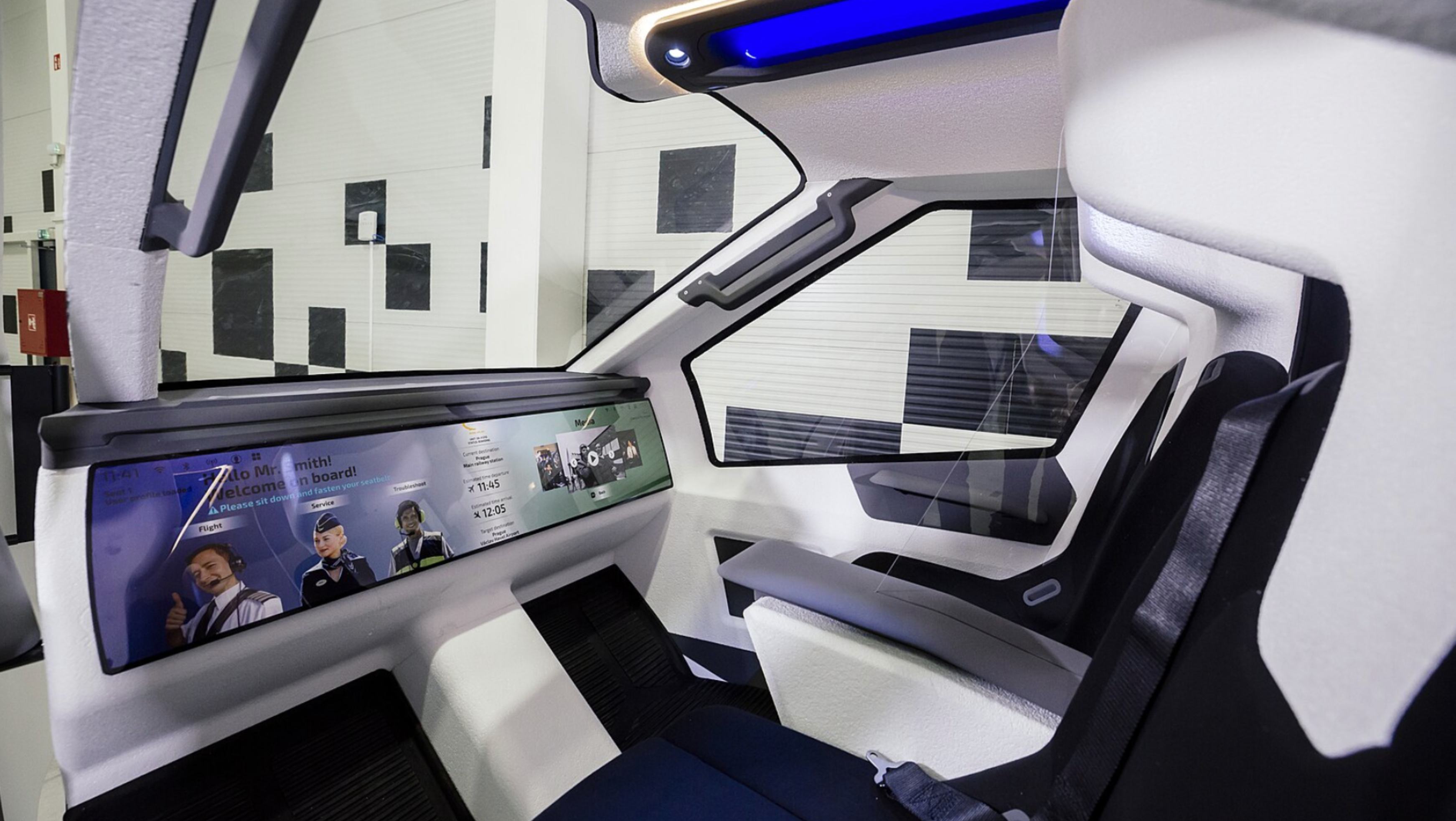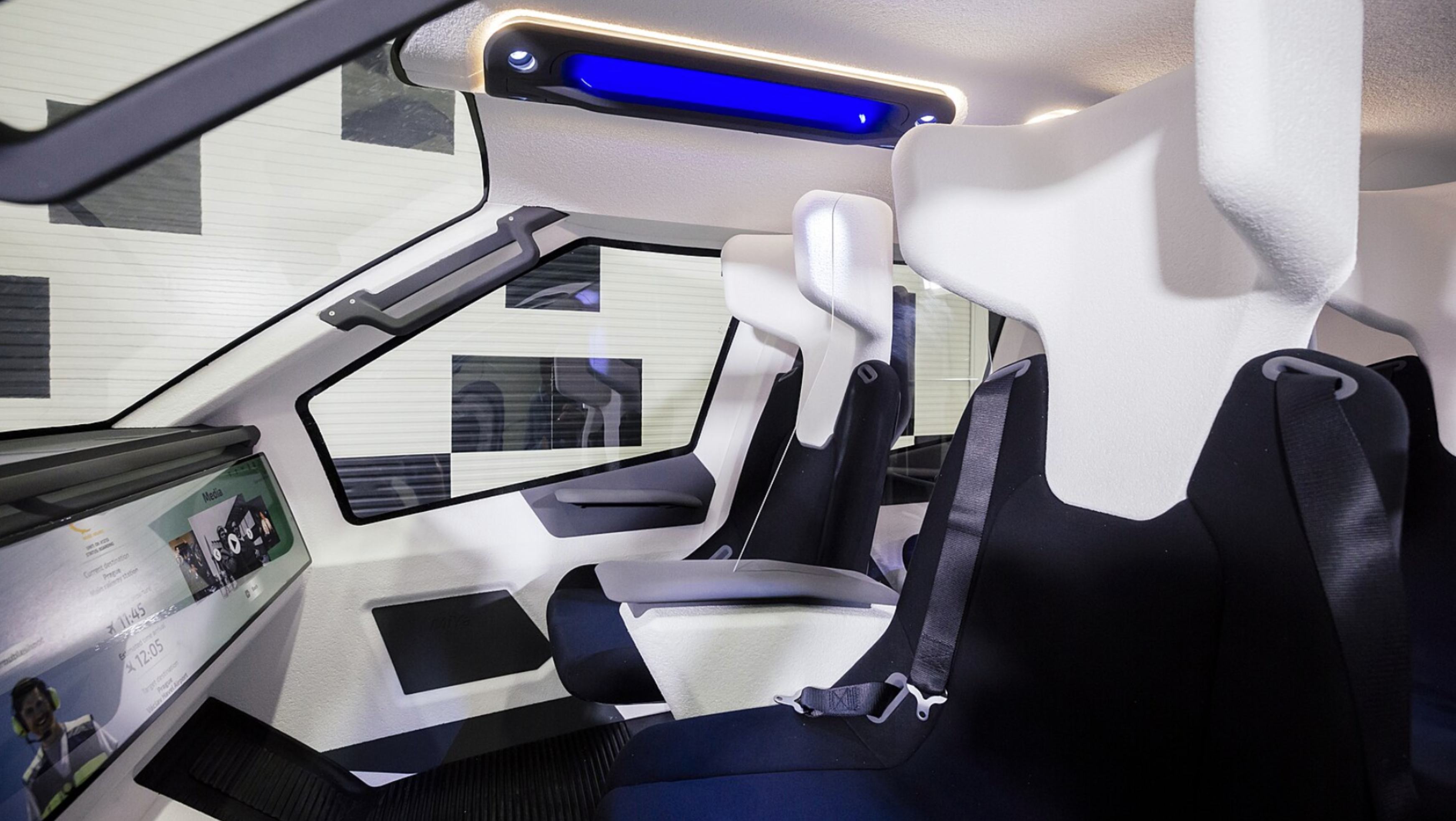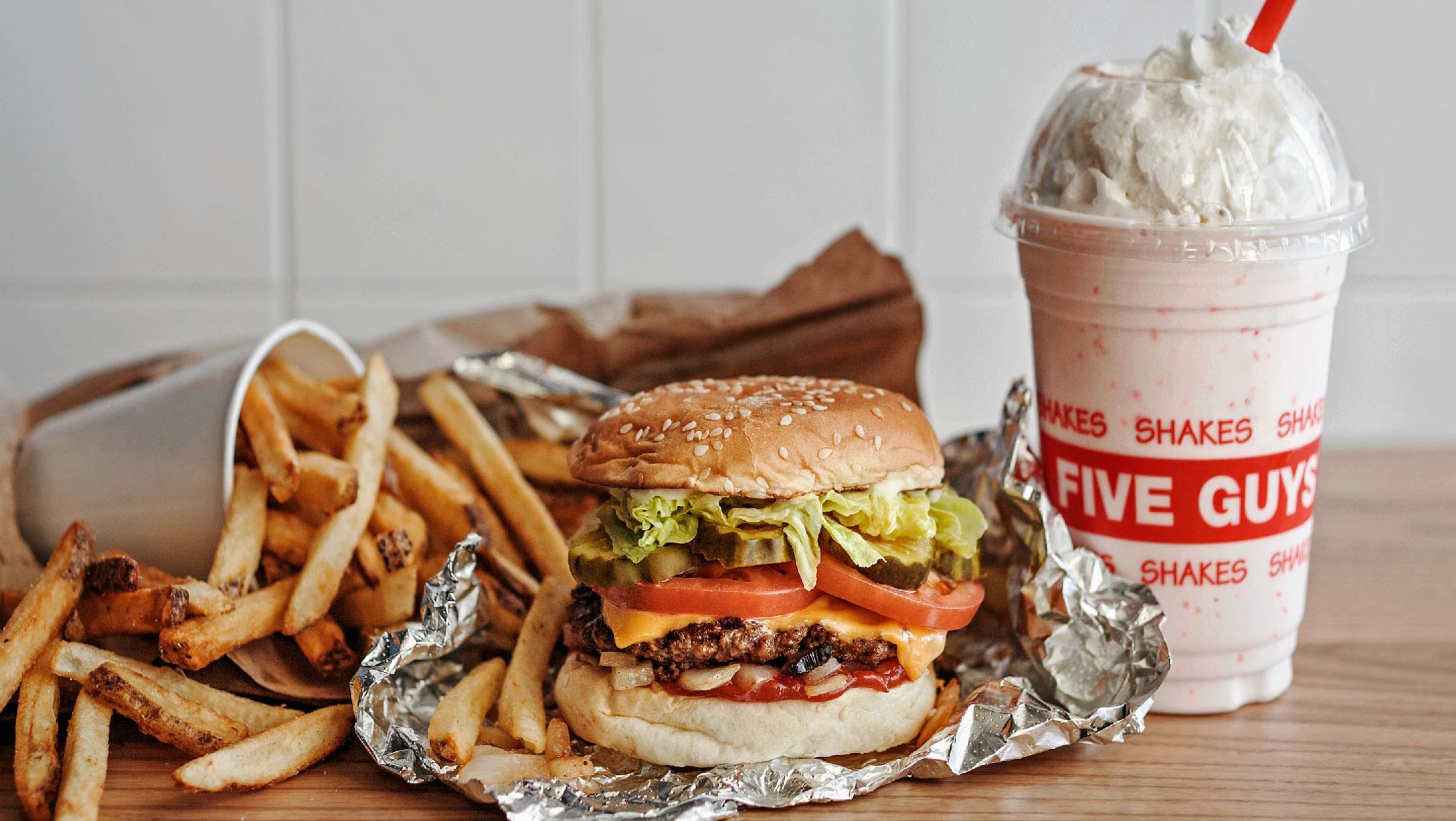Trade unions are planning a protest march in Prague on Monday the 27th of November to join the protest against the government’s austerity package which is expected to hit both companies and individuals, the pension reform and the upcoming hike in energy costs.
The Czech-Moravian Confederation of Trade Unions (ČMKOS) is organizing its own day of protests, and the school unions are preparing a day-long strike for higher wages and more funding for education.
The Association of Independent Trade Unions (ASO) also wants to hold an event on Malostranské náměstí and Mostecká and Karmelitská streets and has reported 5,000 trade unionists to the municipality.
Union members will meet at 12:00 p.m. at Jan Palach Square, from there they should set off at 12:30 via Mánes Bridge, Klárov, Letenská, Josefská, and Mostecká streets to Malostranské náměstí, where the demonstration is due to start at 13:00.
The unions should have a clear idea, at least three days before the strike, of how many people and which workplaces should stop working during the planned protest on Monday 27th November.
The right to strike is guaranteed by the Charter of Fundamental Rights and Freedoms “under the conditions laid down by law”.
According to this law, unions declare a strike if at least half of the employees vote on it and at least two-thirds of them agree to it.
Participation in the strike is treated as an excused absence from work, no wages will be paid for the time spent on strike. People who do not take part in the strike, but are unable to work because of it, should be compensated for their wages with their usual earnings, this is protected by the Collective Bargaining Act, which regulates strike rules.
The last major strike in the Czech Republic took place in mid-June 2011, when transport unions stopped trains in the country and the Prague metro, for a whole day in protest of the government’s planned reforms.
According to the latest data from the Czech Statistical Office, 2.2 million visitors came to the metropolis in the third quarter of 2023, i.e., in the summer season.
Compared to the same period last year, the total number of tourist arrivals increased by 15 percent, reported Klára Janderová, the spokesperson of Prague City Tourism (PCT).
Domestic guests (399,207) made up one-fifth of all visitors to the metropolis during the summer, an increase of 32 percent from the summer period of 2019.
More tourists from the US (142,699 visitors) and Asia (218,281) are also heading to the metropolis, thanks to regular flights from Seoul and Taipei. According to PCT experts, the mix of inbound travellers is also gradually changing.
A total of 5,446,130 tourists visited Prague between January and September. Compared to 2019, the number of visitors climbed up to 91 percent of the original figures. Most of the tourists visit from Germany, the United States, Great Britain, Slovakia and Poland.
Domestic tourism has also been on the rise, with Czech tourists making up a full fifth of the total number of visitors compared to 2019. The Association of Hotels and Restaurants of the Czech Republic published the average length of stay, which remains at 2.2 to 2.3 nights. For one night in the capital, visitors pay an average of 126 euros.
“For us, the goal is not to have as many tourists as possible come to the metropolis, but to increase the spending per tourist and not to encourage the burden on the monument reserve. It is also important that the composition of tourists is changing,” said PCT vice-president Jana Adamcová.
The data also shows an increase in the number of visitors from Asian countries, who arrived in the third quarter with a total of 218,281, an increase of 63 percent from the previous year. These tourists also usually stay longer in the capital.
The higher arrival rate is due to the recommencement of direct air connections from Prague to Seoul in Korea and Taipei in Taiwan. The number of tourists from the United States is also growing, with 17% more arrivals than last year, these tourists also spend the most in Prague.
In addition, the company is supporting tourism with campaigns subsidized by the accommodation fee, for the second year. Along with the campaign to promote domestic tourism, the Stay in Prague campaign, which is implemented in cooperation with Václav Havel Airport and CzechTourism, will be used to target selected source markets, during the summer season.
In December, Prague City Tourism, in cooperation with foreign journalists and influencers, will implement a Christmas campaign to attract tourists to take part in the Christmas atmosphere.
According to a proposal by the Energy Regulatory Office (ERO), the regulated price of electricity in the Czech Republic is expected to increase by 71 percent, next year.
Which would result in an annual increase of around four thousand crowns for one household.
What does the ERO’s proposal state?
The ERO’s proposal states that the regulated price of electricity should increase by 71 percent next year compared to this year. After including VAT, Czech electricity will increase by an average of CZK 1,408 per megawatt hour.
According to data, the average Czech household consumes around three-megawatt hours of electricity per year. However, following the increase in the regulated component, it will cost Czech households around CZK 4,200 per year.
What is the regulated component?
Energy billing in the Czech Republic consists of two components. The first part of the price is the price per commodity, which can be influenced by individual suppliers, and the second part is the regulated component, the amount of which is decided by the ERO.
Why is this happening?
Up until now, the state has partially been subsidizing energy for Czech households. However, this is about to change, and consumers will have to pay again, for example, for fees for supported renewable sources, costs for technical losses in the transmission and distribution system or costs for support services.
The government took this initiative in response to the dire condition of the state budget. Part of the payments will thus be passed on to customers, households, and companies.
What do the government and experts say?
At a press conference on Tuesday, Prime Minister Petr Fiala (ODS) denied that the ERO’s proposal would mean significant price increases in electricity for Czech households. According to the Prime Minister, the increase in the prices of regulated electricity will be compensated for by a decrease in the prices of power electricity.
“I must stress immediately and clearly that energy prices will not rise by tens of percent. Because the price of power electricity is falling, they will pay mostly the same as this year or at most one percent more,” said Fiala.
Some experts are not in complete agreement with the Prime Minister’s words and according to them, the type of contract customers have with their suppliers will play a major role next year.
“For the third of people who are still on the old, pre-crisis price lists and still pay very low prices, this will mean higher prices. Not just because the regulatory component has increased, but also because they will end the old, favourable prices for power energy, and will pay what the rest of us are currently paying” energy expert Jan Béreš told TN.cz.
In a post on the social network X, Tomáš Prouza, president of the Union of Trade and Tourism, said the ERO’s decision has thwarted the government’s efforts to lower prices and tame inflation in the Czech Republic.
“Today’s proposal by the ERO means a significant increase in energy prices for households and companies, especially in the energy-intensive parts of the industry, including the food industry,” Prouza wrote.
Advent, the pre-Christmas period filled with an atmosphere of magic, warmth, and coziness, will soon arrive in Prague. The city streets will be ablaze with colourful garlands and festive markets will open in the squares.
Most of them will be open until Christmas Eve (24 December), and only a few will keep locals and tourists in a festive mood until New Year’s Eve.
We’ve made a selection of Christmas markets in Prague where you can stroll around, drink hot mulled wine, and enjoy the fairytale atmosphere.
Náměstí Míru
This market is located on the square, of the same name, near St Ludmila’s Church. Here, visitors will find a typical festive assortment: Christmas gingerbread, Christmas toys and garlands, candles, souvenirs, Czech snacks, mulled wine, and sweets.
- Address: náměstí Míru, Prague 2, Vinohrady
- Opening hours: 20 November – 24 December, daily from 10:00 to 20:00.

Anděl metro station
This small market will open in the pedestrian zone near the Anděl metro station. There is an important tram intersection and several shopping centres, so expect a lot of people to be there.
- Address: Nádražní, pěší zóna Anděl, Prague 5, Smíchov
- Opening hours: 24 November – 24 December, daily from 08:00 to 20:00.
Náměstí Republiky
This market is located on the yellow metro line, of the same name, next to V Celnici street, opposite the Kolkovna restaurant, and the Christmas tree market is usually also open at the same location.
- Address: náměstí Republiky, Prague 1, Staré Město
- Opening hours: 25 November – 24 December, daily from 10:00 to 20:00

I.P. Pavlova metro station (Tylovo náměstí)
This small market is located near the Peace Square, with a distance of only 3-5 minutes by foot or a single tram stop. The market is primarily meant for locals, which is why the assortment mainly consists of ready-made festive delicacies and fresh products.
- Address: Tylovo náměstí, Prague 2, Vinohrady
- Opening hours: 26 November – 24 December, daily from 10:00 to 20:00
Jiřího z Poděbrad Square
The market on Jiřího z Poděbrad Square, located near the metro station of the same name, will delight visitors with a variety of treats, handmade goods, fresh farm products, and a rich entertainment programme.
Almost every day children’s choirs, magicians, circus, folk ensembles, and musical groups, of various genres, perform on a specially installed stage. For the young guests, organisers also promise to set up special tents hosting creative workshops.
Visitors can order Christmas biscuits and other traditional dishes, specially prepared for the festive table, from the vendors at the market i.e., baked goose, roasted carp, potato salad, etc.
- Address: náměstí Jiřího z Poděbrad, Prague 3
- Opening hours: 29 November – 23 December, daily from 10:00 to 20:00.
Old Town Square
This one is Prague’s largest Christmas market. Thousands of tourists and locals come here every day to get into the festive mood. At the market, you will also find a small enclosure with live sheep, goats, and ponies, eagerly fed by children.
Blacksmiths and other craftsmen will also showcase their skills, and national ensembles will entertain guests from the stage. Most of the market will consist of food and drink stalls. The section with inedible goods will be traditionally much smaller than that of other markets.
On the evening of Saturday, the 2nd of December, the country’s main Christmas tree will be lit up at the market.
- Address: Staroměstské náměstí, Prague 1, Staré Město
- Opening hours: 02.12.2023 – 06.01.2024, daily from 10:00 to 22:00 (some fast-food stalls until 24:00).

Christmas Market on Wenceslas Square (lower part)
This market will be located in the lower part of the famous Wenceslas Square at the exit by the Můstek metro station. This market is primarily aimed at tourists, meaning it will remain open for almost a week after New Year’s Eve.
- Address: Václavské náměstí, Prague 1, Nové Město
- Opening hours: 02.12.2023 – 06.01.2024, daily from 10:00 to 22:00 (some fast-food stalls until 24:00).
Palladium shopping centre
This will be another market by the Republic Square, but the organizers and opening hours will differ from the other. Festive stalls with souvenirs and treats will be directly located at the main entrance of the famous Palladium shopping centre.
- Address: náměstí Republiky, Prague 1, Staré Město
- Opening hours: 2 December – 30 December, daily from 10:00 to 22:00 (Snack tents until 24:00).
Christmas market on Kampa Island
A small but very cosy market will be held on Kampa Island near the Charles Bridge. Traditional Christmas food and drinks, farm products, musicians, and a festive atmosphere await its guests.
- Address: Kampa, Praha 1 – Malá Strana
- Opening hours: 03.12.2023 – 01.01.2024, daily from 10:00 to 20:00.

YouTube has long been setting the scene for popular fads and trends, the newest of which is the PRIME energy drink founded by world-famous YouTubers Logan Paul and Olajide William Olayinka, otherwise known as KSI.
The energy drink has been promoted extensively by the original creators, as well as other notable personalities from the sports world, however, its suitability for children and composition has raised concerns.
It is not just the high content of caffeine, according to a practitioner, but also the large dose of potassium which poses risks. Excessive intake of it could cause a range of health issues such as heart problems, muscle weakness, and overall fatigue.
“A lot of my friends drink it, it is a hit in the classroom and at school,” said twelve-year-old Matouš, who attends secondary school to iDNES.
Some children even exchange and sell the cans with one another and others drink the energy drink regularly, “I think it is the most popular energy drink in elementary schools right now” adds Matouš. The reason for the popularity of the drink is evident to Matouš, as the brand is promoted by celebrities with millions of followers, especially children.
Sweetened coconut water worth CZK 300
Up until a few months ago, it was difficult to find the popular drink in the country and could only be ordered from the UK or in online stores, meaning a small can cost up to CZK 320.
Today, however, the drink is available in convenience stores, chain stores, and even drugstores for only CZK 90, attracting even more intrigued children.
The drink comes in two basic variants and flavors that imitate ice cream or fruit. The “energy” variant, sold in cans containing 200mg of caffeine, is equivalent to three espressos.
The second variant, “hydration”, is caffeine-free but replaced with a large dose of potassium, which according to the half-liter bottle comprises 700mg of its content. Doctors, however, point out that neither option is suitable for children.
According to the Czech doctor Rodion Schwarz, energy drinks often contain high quantities of caffeine and other stimulants, and because children are far more sensitive to caffeine than adults, it has various negative effects on children.
Among the other effects of caffeine, he mentions increased heart rate and blood pressure, insomnia, sleep disturbances, nervousness, anxiety, and dehydration.
“The high potassium content of the hydration drink can be problematic, if children consume the drink in large quantities, especially if their diet is not balanced and does not contain enough sodium. While potassium is an important electrolyte for muscle and nerve function, excessive intake can lead to hyperkalemia, a condition in which there is too much potassium in the blood, which can be dangerous”.
Aerospace developers have been exploring new technology that would allow people to airlift between cities using AI-controlled drones, allowing Prague passengers to transport between Prague’s main station Hlavní nádraží to Vaclav Havel Airport in a matter of minutes.
This technology is not a part of a new sci-fi movie, but rather it is the future of air transport that was presented by experts at the Aerospace Research and Test Institute on Monday.
While the construction of the new metro connection in the direction of the airport is still nowhere in sight, Czech experts have begun working on the concept of air travel.
This new project seeks to provide fast transport at an affordable price, within the price range of a regular taxi, except it will be transporting you 400 meters in the air. “A new chapter of Czech industry, business, and aviation is beginning,” says Josef Kašpar, Director General of VZLU.
According to him, the new mode of transport will be designed primarily to help Prague, “but also to the regions, because a network of motorways or railways is not everywhere. In addition, the platform will not only be for personal transport but also cargo transport” says Kašpar.

“We need influence on deciding what will be built where, and not to wait for developers to occupy all the places. We are communicating with the state administration and with the regions, and believe the concept will be a success, not only in Prague but also the rest of the Czech Republic, because it has potential” Kašpar adds.
“The drone carrying the cabin is a robot that will be moving along a pre-planned route,” said Petr Raška, head of the Unmanned Systems Department of VZLU, yesterday when presenting the Czech prototype, designated MiYa.
Raška also states that “During the journey, it will be necessary to communicate with passengers from the ground control post, to be informed of what is happening on board, therefore there will be video cameras so that the supervisor from the ground can monitor the flight, even more so the aircraft, at the same time,”.

MiYa is designed for a flight altitude of up to four kilometers, but according to Raška, there will be no reason to fly that high.
“We expect a height of 400 metres above Prague. Because Prague is relatively rugged, we need height for possible maneuvers,” he explains.
For the time being, the take-off and landing stands, or the so-called vertiports, are planned for the Hlavní nádraží, Vítězné náměstí, Letňany, Pankrác, Chodov and Ruzyně Airport.
“We are heading to the middle of the next decade, where we expect transport to be emission-free. It will be an alternative to land transport, and for a reasonable price, comparable to that of a taxi,” says Raška.
Trains will run from Prague to Gdynia, and on the Polish side, the line will be operated by PKP Intercity.
The new Ex32 line will be launched next year and the Czech transport minister has already confirmed this information.
What exactly will the route look like? Trains on the Ex32 line will run on the Prague – Pardubice – Wroclaw – Gdynia route.
In Poland, in addition to Gdynia and Wrocław, the train will also make stops at Poznań, Bydgoszcz and Gdańsk.
“Prague, Wrocław, and Gdansk, on the Baltic coast, will be connected by a new railway line from December 2024. We have signed a ten-year contract, a year in advance, for the Ex 32 Prague – Pardubice – Lichkov state border line. You can now easily reach the Polish Baltic Sea by train,” says Martin Kupka, Czech Minister of Transport, on Platform X.
In the Czech Republic the connection will be through České dráhy, while on the Polish side, the PKP Intercity connection will be in charge, but the wagons will be Czech all the way to Gdynia itself.
The journey from Prague to Wroclaw is expected to take four hours, and from the Czech capital to Gdynia about nine hours, the Czech minister estimated.
“Trains will depart four times a day from both ends of the route, at four-hour intervals. The exact routes will be part of the work on the 2025 timetable,” – he added. The connection will also be co-financed by the Czech government.
Czechs in love with Poland
For some time now there has been a real boom in Poland among its southern neighbours. Czech Forbes magazine called the country ‘the new Croatia’. This is because every year more and more Czechs decide to spend their holidays in Poland, and the Baltic beaches are one of the most popular destinations there.
Data from travel agencies have shown that the number of stays purchased by Czechs has increased by up to 150%, compared to the previous year.
It is no wonder that the group POLSKO – tipy na dovolenou, krásná místa a zajímavosti, i.e. ‘Poland – travel tips, wonderful places and curiosities’, has become very popular on Facebook, it has already gained more than 90,000 members.
“It’s magical here. It’s not as hot as in the south. The prices are reasonable. It is simply wonderful,” Czech tourists have praised the qualities of the country.
From burgers in Louisiana to fried chicken in London, Prague Morning has compiled a list of foreign fast-food chains that could give current Prague chains a run for their money.
Last Friday, Popeyes had its grand opening in Wenceslas Square, where eager-eyed customers flooded the entrance of the newly opened store, queuing for hours to get a taste of the much-awaited Louisiana chicken sandwich.
The opening of Popeyes has opened doors for the Czech Republic to expand into more exciting fast-food options, beyond McDonalds and KFC.
Let’s look into what other tasty opportunities would be valuable additions for the Czech market and its fast-food lovers.
Five Guys
The American burger chain was founded in Virginia in 1986 by Jerry Murrell and his five sons, hence the name. However, it has now established quite a name for itself around the globe.
While the restaurant is mostly known for its burgers and fries, it also offers a wide range of hot dogs, fries, and milkshakes. Much of its popularity also comes from customers being able to select up to 15 different toppings without extra charge.
The chain currently operates in around 24 different countries, the closest for Prague Burger lovers being in Berlin or Nurnberg.

Taco Bell
Second on our list is none other than the Taco King, Taco Bell. Though the chain is originally American, and founded in California, it has managed to successfully capture the flavorful nature of Mexican food and deliver it worldwide.
The chain currently has more than 7000 restaurants around the world. Considering the popularity of the Mexican restaurant Las Adelitas in Prague, Mexican food has garnered quite the fanbase in the country, so providing a fast-food option would do a great service for those craving a fast and flavorful meal.

Chipotle
We could not move on from the flavors of Mexico without mentioning Chipotle, known to be the most popular Mexican cuisine fast-food restaurant. The restaurant offers a wide range of quesadillas, tacos, burritos, salads, and bowls but what makes it unique is that the food is prepared with fresh ingredients right before your eyes.
With over 3,200 branches worldwide, the restaurant is mostly known for its vast use of guacamole sauce, and interestingly the restaurant makes use of an average of 60 avocados for a single batch of sauce, resulting in an average of over 40,000kg of avocados per day.

Leon
Fast food is usually known to be greasy and unhealthy options for hungry days, especially for cheat days, but that doesn’t mean it’s always the case. Leon, a UK-based fast food chain, was one of the fast-food chains that broke that presumption by offering a healthier fast-food alternative.
It offers the usual burger, fries, and fried appetizers combos but with a bit of a twist. The chain takes inspiration from Mediterranean cuisine and even includes items such as chicken korma, and vegetable stews served with meat and yogurt. Overall, the chain aims to bring a healthy twist, which is much needed in the fast-food industry.

Nando’s
Another UK favorite to add to the list is Nando’s, though it is originally a South African chain, it specializes in making Portuguese flame-grilled peri-peri chicken. It is also widely popular for its sauces and marinades, which retail in many UK supermarkets.
The chain offers many flame-grilled chicken options such as burgers, pittas, wraps, wings, and salads. The UK is in fact Nando’s largest market though it operates in around 30 different countries, with 1,200 outlets.

Dunkin’ Donuts
This list would not be complete without adding an option for those with a sweet tooth. The donut chain not only offers an assortment of donuts, most famously its Boston Kreme and Glazed donut, but also a side of coffee and other hot drinks.
What’s most striking about the franchise is that it has a donut specially dedicated to each country, for example, in Singapore you can get a wasabi cheese and seaweed donut!

